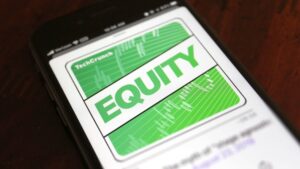Browsing travel options on Google Flights, you may have noticed that airlines have begun to incorporate carbon emissions data into their offerings to consumers.
As a frequent flyer, all things — including price — being equal, I’ll always choose the more carbon-efficient flight. This is novel and striking to me. It’s exciting to have a new data point to understand my personal carbon footprint, but it also highlights a real inflection point for the investor community.
If environmental data is already available and marketable at the consumer level, this means the era of ESG – environmental, social and corporate governance – is essentially here at the enterprise level and it is the next big frontier in corporate governance, risk and compliance (GRC).
But right now, ESG is seen by some as all talk, little action – there may be hundreds of executives touting the importance of ESG, but we still lack a universal measuring stick for clearly understanding ESG performance. Without that, it’s difficult to determine what is right from what is wrong, or what is a strong investment from a shortsighted one.
The common denominator that investors must understand, without a doubt: The key to understanding ESG is all about collecting the data and having it in an actionable format for analysis. Once key metrics are measured, investors and executives alike can make smarter decisions. So how do we value ESG performance and make it more actionable?
Investors need to start thinking about ESG risk in the same way they consider investment risk, as a first step.
A recent Morgan Stanley survey determined that 85% of all individual investors were interested in sustainable investing, up 10 percentage points from 2017, while a Bloomberg report indicated that ESG assets may hit $53 billion by 2025, which would be one-third of the world’s total assets under management.
Investors need to start thinking about ESG risk in the same way they consider investment risk, as a first step. Most stakeholders expect companies to play a role in decarbonizing the global economy and being responsible global citizens. Consider how strongly consumers react when corporate entities are caught being irresponsible: If companies are not holding themselves to a certain ESG standard, they have to answer to their customers, employees, investors and the larger global community.
Interestingly, we have seen this same paradigm play out in the broader risk management sector. Governments haven’t yet caught up to fast-evolving risk factors in a more digitized world – the metaverse and cryptocurrencies are great examples of new and risky territory with no set regulations.
As governing bodies catch up, companies must then set their own internal standard for how they manage and measure risks. This internal regulation is reinforced by the rest of the enterprise ecosystem – partners, suppliers, consumers and institutional investors all drive the need for GRC requirements as they size up their own risks and investments.
ESG investors can also take insight from the broader risk management space when considering how to value the role of ESG: For any risk, the best way to understand how to make informed risk decisions is to measure the risk as a monetary value. As a tail risk, ESG has long flown under the radar – the cost is so high, and the likelihood of a risk event is so low, corporate leaders tend to underestimate the likelihood and cost of an ESG risk event.
As investors, correctly quantifying ESG risk and understanding their plans to address risk events is essential to provide the proper discounts and premiums on an investment.
Look for the following signs when evaluating investments – these will point toward companies that are taking steps to self-regulate their ESG standards and are aware of the true size and scope of ESG risk threats.
ESG scoring is table stakes
Regulation in the ESG space will only increase as governing bodies continue to catch up to what is happening in real time within and between organizations. Congress recently passed the $1.2 trillion infrastructure bill, which included several ESG initiatives, and the Securities Exchange Commission announced its heightened focus on ESG disclosures.










